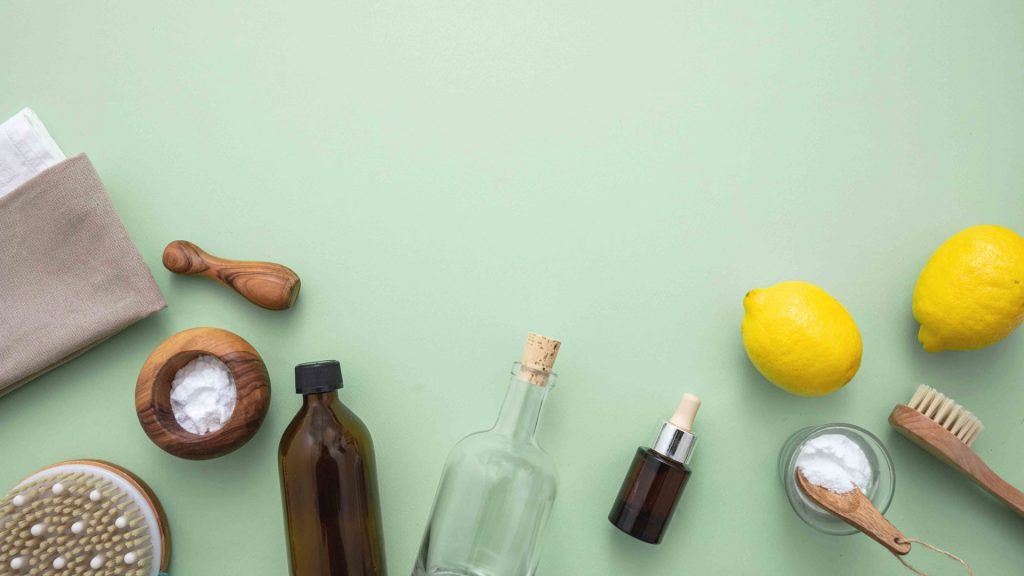Traditional cleaning of the home requires various items to get the job done that can end up in the bin afterward, such as paper towels, plastic bags, sponges, and chemical products that are bad for the environment.
This is why you should switch to zero-waste cleaning of your home.
What, exactly, is zero-waste cleaning? This type of cleaning doesn’t require all those disposable items. Instead, it focuses on making use of tools and items that are strong and sustainable so that they can be reused many times in the future.
Is a zero-waste cleaning routine really possible? If you’re wondering this, read on to find out how to not only make it possible but pleasurable.
Contents
Table of Contents
ToggleWhat Are Zero-Waste Cleaning Tools?
You might wonder what zero-waste cleaning tools and items you have at your disposal, right? The good news is that you probably don’t have to go out and buy anything!
You can make use of cleaning tools you already have in the home. Here are some of the most essential zero-waste cleaning tools that you should use to clean your home.
Repurposed items

You can repurpose a variety of items around the house and use them in new ways, such as old toothbrushes that can be used as scrubbing brushes, old kitchen sponges that can be used to clean in other areas of the home, and old clothes that can be cut up and used as cloths to wipe the dust from surfaces.
Glass bottles
To store your cleaning liquids during a cleaning session, you should make use of glass bottles instead of plastic ones. Choose ones that have metal lids so you can shake the liquid if you’re using your own DIY cleaning solution.
Cleaning ingredients
Part of your zero-waste cleaning routine should involve not using chemical cleaning agents.
These usually come packaged in plastic that ends up getting thrown away and clogging landfills, and they also contain toxins that you don’t want to breathe in the home.
To make your own cleaning solutions, you only have to look in your kitchen! Here are some ideas for DIY cleaning solutions that you can whip up easily and which won’t harm you or your home with unhealthy chemicals.
These ingredients can be used on their own or mixed together in some instances to give you an even more powerful cleaning solution.
Baking soda
This is a cleaning powerhouse! It can be used in a variety of ways around the home, such as to clean mugs with coffee stains, to clean taps and faucets so that they shine, and to clean drains that have become blocked. Pro tip: use it with white vinegar to tackle mold in areas of the home such as the shower.
White vinegar
This is a cleaning solution that can clean floors and toilets, and everything in between. It has strong deodorizing features, so it will help to make your home cleaner and smell better. It can also be used to soften fabrics when they’re washed in the dishwasher.
Coconut oil
This works well to remove stains on carpets as well as upholstery. It can also be used to polish patent leather so that it shines. Put some on a cloth and use it to scrub at shower scum as it will work effectively to remove it.
Castile soap
This is biodegradable soap that’s amazingly made out of olive oil! It comes in soap or liquid consistencies, and it works well to clean a variety of surfaces and items in the house, including walls, ceilings, floors, and even laundry.
DIY laundry detergent
You can make your own laundry detergent with some ingredients you probably already have at home. Mix together one bar of grated castile soap, 1 ¼ cups of baking soda, 10 drops of essential oil for fragrance, and two cups of washing soda (which is a natural cleaner and water softener).
When you’re ready to wash a load of laundry, use about one tablespoon of this mixture but go ahead and add a bit more if you have a larger or dirtier load.
Cotton cloths
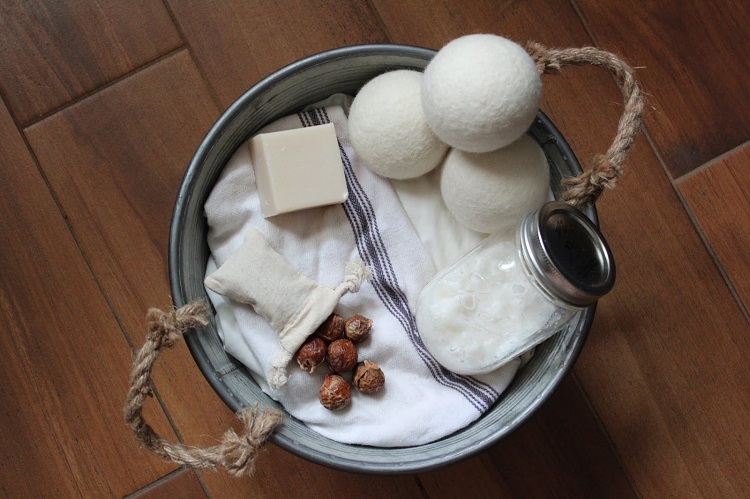
Stop making use of paper towels to clean around the home. These are single-use and end up in landfills. Cloths made of organic cotton are better. If you want to make your cleaning routine even more zero-waste, consider cutting up old t-shirts to make cloths.
Cellulose sponges
Regular sponges used for washing dishes contain chemical dyes and can leach microplastics. They’re also not biodegradable. Cellulose sponges are better for the environment because they’re made out of wood fibers.
The right vacuum cleaner
A vacuum cleaner is essential for giving your home a thorough clean. It also purifies the air by trapping dust so it can’t be released back into the home.
You should vacuum your home at least once a week (more regularly if you have pets). However, you have to ensure you choose the right one that will clean your home properly without causing waste.
The waste we’re talking about with vacuum cleaners is its dirtbag that has to be replaced. You’ll have to bin the bag at some point and buy a replacement, which can be repeated many times over the vacuum cleaner’s lifespan.
It’s much less wasteful to have a vacuum cleaner that’s bagless. This machine usually comes with filters that you can wash to extend their lifespan and dust bins that you empty when full.
The right mop for eco-friendly cleaning
A mop is another cleaning tool in the home that can cause waste. For starters, it works with a bucket that you’ll have to fill with water which becomes dirty and has to be thrown out.
A better cleaning device is a steam mop. This doesn’t require the use of cleaning solutions as it only uses steam to clean and sanitize your home. Your floors will also dry faster, which is a bonus.
When shopping for a zero-waste mop, check its head. It should be made of microfiber. This is not only very absorbent to clean your home properly, but it’s durable and will last you a long time without deteriorating.
Zero-Waste Cleaning Tips For All The Rooms In Your House
Kitchen
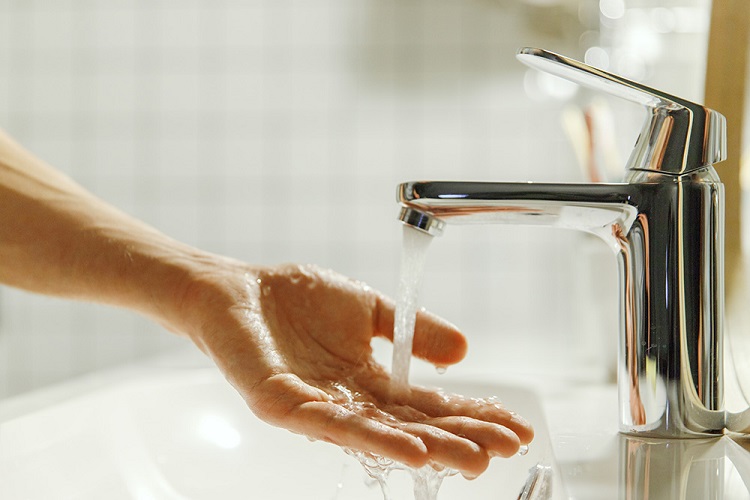
Stop letting the water run
Do you wash plates and cutlery individually in the sink while leaving the tap to run? This is literally throwing water down the drain. Make use of your double sink and fill one sink with soapy water and the other with water. If you use a dishwasher, fill it to the top before you do a wash cycle.
Put food scraps in the compost
This prevents you from throwing out food items that can be put to better use, such as improving soil and encouraging plants to grow healthier in the garden.
Use lemons instead of disinfectant wipes
Lemons work well to remove dirt and they are antiseptic so they effectively clean bacteria and germs. Add a spritz of lemon juice to a cloth when cleaning surfaces in the kitchen. The bonus is that you’ll also make your kitchen smell delicious.
Clean your oven by mixing together baking soda, vinegar, and water
Apply it to areas of the oven that are dirty. Let the mixture work for half an hour.
Save water
Save water and avoid the use of harsh cleaning agents by using baking soda and vinegar to clean pots and pans. Let them soak in this mixture for a while before you wash them – you’ll save water because the dirt will come off easily, no chemicals required.
Bathroom
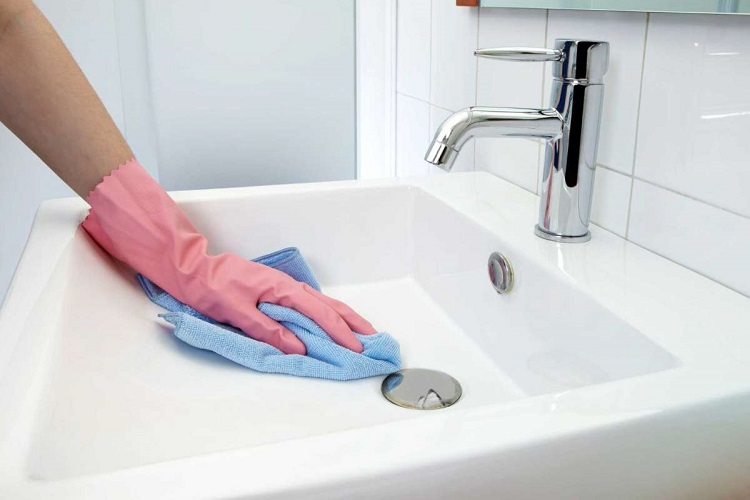
Make your own glass cleaner that you can use on windows, shower doors, and mirrors
Fill half of your spray bottle with distilled vinegar and fill the rest of the bottle with water. You can also add a spritz of lemon juice. This will prevent you from purchasing store-bought bathroom cleaners that usually come in plastic bottles.
Clean the toilet with the use of vinegar
Spray the entire toilet (the top, seat, under the seat, cover, and around the base) with vinegar. Put some liquid castile soap in a bowl and then use a toilet brush to brush the toilet so that it sparkles.
Make a homemade grout cleaner
This will prevent the use of chemicals in the home. You can make your own DIY grout cleaner by mixing together hydrogen peroxide, baking soda, and dish soap. Note, however, that you shouldn’t use very acidic ingredients such as vinegar as these will corrode the grout.
Clean bathroom surfaces with a microfiber cloth
This works well to pick up debris and dust as a result of its very fine synthetic fibers. This also reduces how much cleaning liquid you have to use. Wash and reuse the microfiber cloths, therefore preventing waste. They’re a much better alternative than using single-use paper towels.
Bedroom
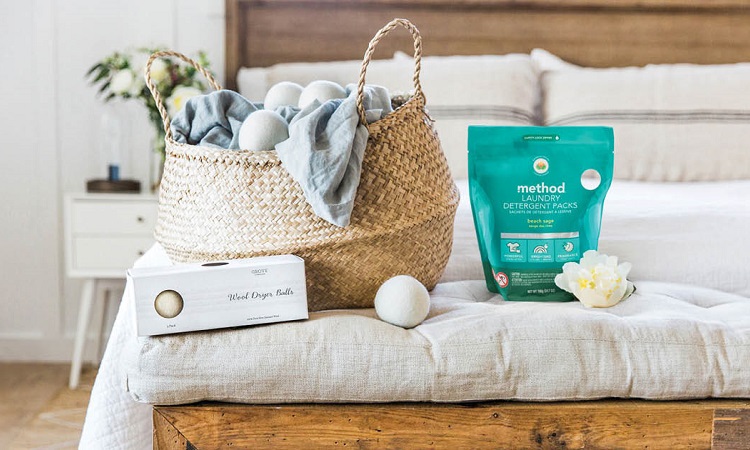
Since your bedroom is the sanctuary in which you sleep and relax, you want to minimize allergies. Instead of dusting your furniture, you should wipe surfaces clean with a microfiber cloth. This will collect and trap particles, preventing them from being released back into the air.
Vacuum your floors and/or carpets regularly. This is another zero-waste cleaning tip that will prevent dust and debris from scattering around the room. It also prevents you from having to use a cleaning solution to clean your floors.
Clean up the clutter. You might have a lot of clutter that gets produced in the bedroom, such as books, papers, and clothing.
Check which ones can still be used even if you don’t want them or they’re just taking up space. Donate whatever you can so you reduce how much trash your home produces.
Wash your bedding with eco-friendly detergents. Not only do these reduce the use of chemicals, but they also come in organic packaging.
When cleaning your bedding and mattress, make use of homemade ingredients so you prevent unnecessary chemical products and eliminate the worry about how to dispose of their bottles in the future.
A versatile stain-removal solution is to mix together one part dish liquid and two parts hydrogen peroxide. Put it in a spray bottle and mix it together well before spraying it over the stain. Work the liquid into the stain with your fingers.
Living Room
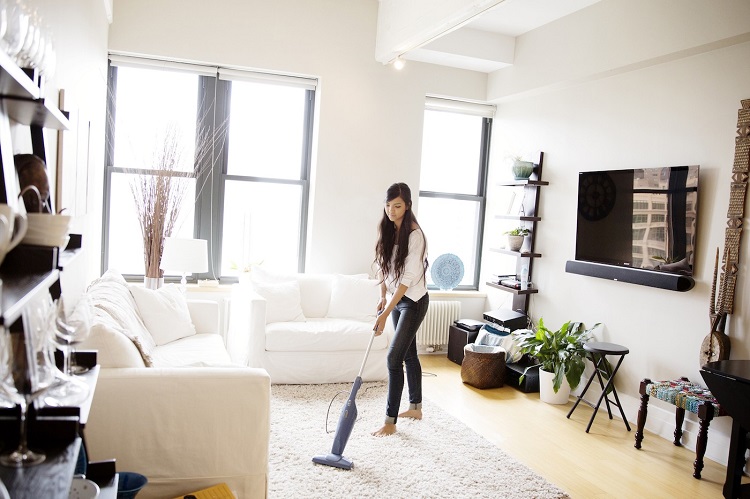
Cleaning your living room in a zero-waste way will make use of many of the tips we’ve already featured, such as vacuuming or mopping your floors with the correct products as well as using a microfiber cloth to dust instead of a duster.
There are some other tips to consider, such as the following:
Clean furniture with bicarbonate soda. Put baking soda in a salt shaker and sprinkle it all over the fabric-covered furniture.
Leave it for about an hour to work, although you can leave it overnight. Then, remove the baking soda granules with a vacuum cleaner.
The living room can get cluttered easily, so repurpose containers from elsewhere in the home to store knicks and knacks.
This prevents you from buying new containers and will therefore reduce waste. Donate any items you don’t want but which are still in good condition.
Make a natural air freshener. Since the living room is where members of your household congregate daily and this is also where you’ll entertain guests, you want it to smell good. Skip store-bought air freshener in favor of making your own.
Diffuse a few drops of essential oils into the air after you’ve cleaned your home. This is a more natural way to make your home smell lovely.
When you want to polish your living room furniture, you can make your own furniture polish.
Add a bit of lemon juice to one tablespoon of coconut oil. Gently rub this on wood furniture with a soft cloth. To make bronze polish, rub some coconut oil on bronze items to clean them and this will also deepen their color.
How To Recycle Common Cleaning Waste
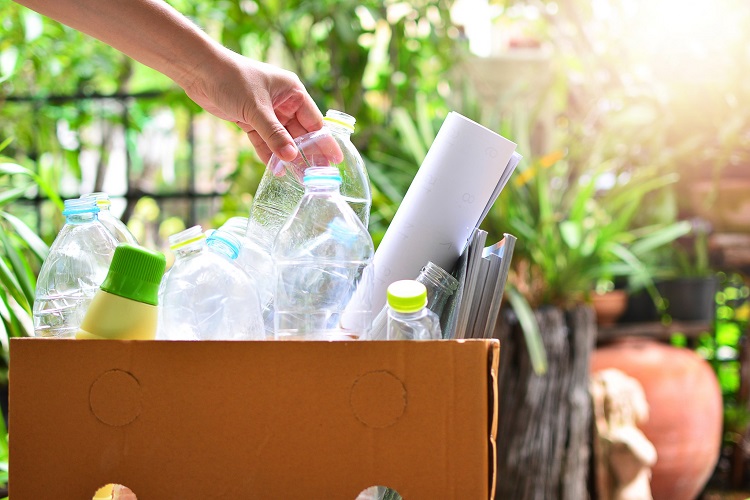
You might still have some items in the home you have to recycle. Here’s information about how to go about it and find new ways to reuse items as much as possible.
Recycling Cardboard/Paper
Paper makes up around 23 percent of all municipal solid waste that’s produced each year, which is more than any other material.
You can recycle a variety of paper/cardboard items, such as newspapers, magazines, pizza boxes, and cardboard containers.
If food has been in the container, make sure to remove food residue. If that’s not possible, the container won’t be able to get recycled.
Recycling Plastic
There are good reasons why you should avoid plastic items around the home as much as possible. Some plastic types are not accepted by community recycling programs, so sometimes recycling plastic can be complicated.
Here’s some information about popular plastic items and if they can be recycled:
- Plastic wrap, film, and bags. These can’t go into your household recycling bin. Some grocery or retail stores will accept these for recycling.
- Plastic bottles and their caps. These generally can be recycled, and you can leave the labels on the bottles.
- Styrofoam. This is rarely accepted by community recycling programs.
- Plastic cups, utensils, and food containers. These sometimes can be recycled but that depends on the type of plastic that’s been used to make them. If these items contain any food debris or residue, they won’t be able to be recycled.
Glass
Glass is easier to recycle than plastic, but if the glass containers you have are still in good condition consider reusing them in the home.
Note that if the glass is broken, it can’t be recycled and you shouldn’t put it in the recycling bin as this can injure workers or damage recycling equipment.
How Can You Recycle Old Furniture?
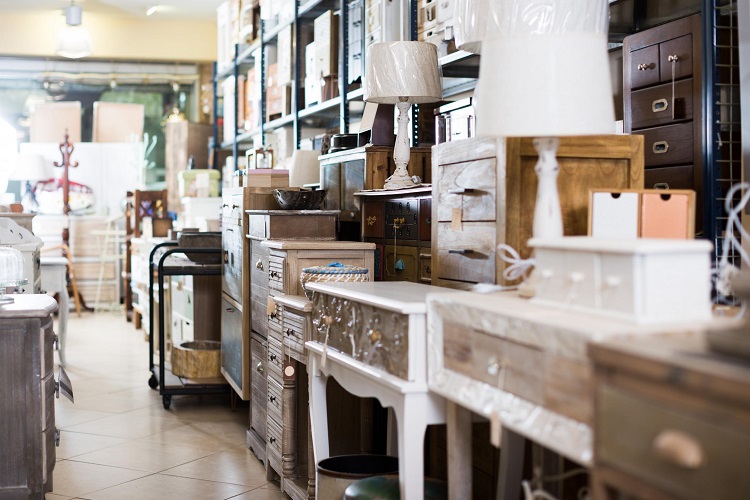
Some of the best ways to recycle old furniture is to upcycle it so that you can reuse it as something else, or donate it – this can take the form of giving it to a charity/hospice or giving it to a loved one who might like it.
Upcycling furniture is great because it breathes new life into an old piece of furniture while giving you something that you love to look at in the home.
Examples of upcycling furniture include DIY projects like replacing seat cushions and painting chests of drawers so that they look brand new.
Other ideas for recycling furniture include:
- Trading in your old furniture. Some furniture companies will allow you to trade in old furniture, so that’s worth checking at your local stores.
- Selling it. If your furniture is in good condition, why not earn some money by selling it, either online or to someone in your community who might be interested in it?
How To Recycle Textiles

As with furniture you don’t want anymore, textiles can be upcycled into new items to breathe new life into them. Here are other things you can do with textiles you don’t want.
- Donate them to a charity. Hospices and charities are always looking for old clothes and fabrics, even cloths and towels, so find one in your area.
- Send them to a recycling facility. Community recycling programs don’t accept textiles, so you’ll have to take them to a donation or recycling facility. You can search for ones in your area by visiting Earth911.
How To Recycle Your Empty Detergent Bottles
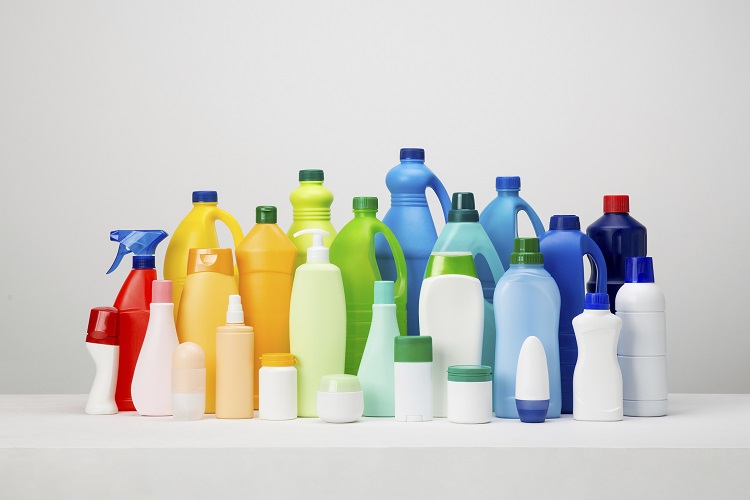
If you’re just starting your zero-waste cleaning journey, you might still have some chemical detergents that you’re using. Once they are finished, what will you do with the bottles?
Instead of throwing them into the trash or recycling them, you should find other ways to reuse them. Here are some easy, creative ideas.
Cut off the tops of the empty bottles and use them as storage containers for small items that tend to get lost around the home and garage, such as screws, bolts, and nails.
Turn them into weights
You can use these to pin down tarps or ropes, or other items. Simply fill the empty bottles with sand and keep them around the home or in your car so that you have DIY weights when required.
Use them as litter tray scoops
Clean the detergent bottles out thoroughly and then use them to clean up your cat’s messes from the litter tray. Simply cut off the bottom of the bottle. This makes it easy to pour the mess into a bag for disposal.
Make DIY watering cans
Instead of purchasing a watering can from the store, you can make your own. Poke holes in the cap of the empty detergent bottle and then fill it with water, screw the cap back on, and use it to water your plants.
Related Questions
Can you recycle empty detergent bottles?

You can recycle these bottles, but you have to ensure they’re completely empty and have been rinsed out well so residue doesn’t contaminate other recycling items.
Check the recycling label on the bottle to ensure you can recycle it and what parts of it are recyclable.
Can you clean the home with apple cider vinegar?
You can clean your home with apple cider vinegar as it works in the same way as white vinegar, however, its smell does take a bit longer to dissipate.
Conclusion
If you want to stop throwing out so much trash and you want a zero-waste cleaning routine for the home, this guide has shown you the ins and outs of how to make both a reality.
We’ve also given you tips on how to recycle and upcycle common items that usually go to waste in the home, so you can turn your trash into treasure.

